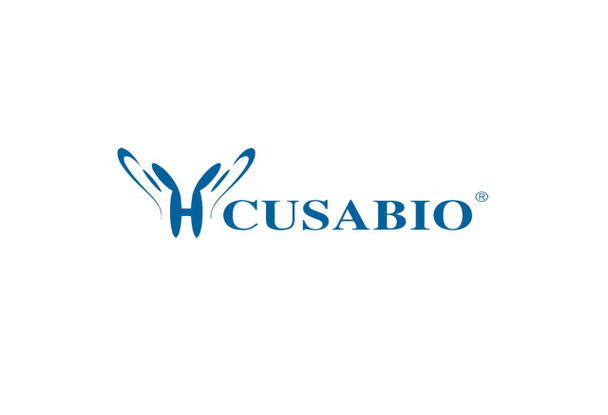Cusabio Human Recombinants
Recombinant Human Transcriptional enhancer factor TEF-1 (TEAD1), partial | CSB-EP023363HUb0
- SKU:
- CSB-EP023363HUb0
- Availability:
- 13 - 23 Working Days
Description
Recombinant Human Transcriptional enhancer factor TEF-1 (TEAD1), partial | CSB-EP023363HUb0 | Cusabio
Alternative Name(s): Transcriptional enhancer factor TEF-1(NTEF-1)(Protein GT-IIC)(TEA domain family member 1)(TEAD-1)(Transcription factor 13)(TCF-13)
Gene Names: TEAD1
Research Areas: Others
Organism: Homo sapiens (Human)
AA Sequence: MEPSSWSGSESPAENMERMSDSADKPIDNDAEGVWSPDIEQSFQEALAIYPPCGRRKIILSDEGKMYGRNELIARYIKLRTGKTRTRKQVSSHIQVLARRKSRDFHSKLKDQTAKDKALQHMAAMSSAQIVSATAIHNKLGLPGIPRPTFPGAPGFWPGMIQTGQPGSSQDVKPFVQQAYPIQPAVTAPIPGFEPASAPAPSVPAWQGRSIGTTKLRLVEFSAFLEQQRDPDSYNKHLFVHIGHANHSYSDPLLESVDIRQIYDKFPEKKGGLKELFGKGPQNAFFLVKFWADLNCNIQDDAGAFYGVTSQYESSENMTVTCSTKVCSFGKQVVEKVETEYARFENGRFVYRINRSPMCEYMINFIHKLKHLPEKYMMNSVLENFTILLVVTNRDTQETLLCMACVFEVSNSEHGAQHHIYRLVKD
Source: E.coli
Tag Info: N-terminal 10xHis-tagged
Expression Region: 1-426aa
Sequence Info: Partial
MW: 54.0 kDa
Purity: Greater than 85% as determined by SDS-PAGE.
Relevance: Transcription factor which plays a key role in the Hippo signaling pathway, a pathway involved in organ size control and tumor suppression by restricting proliferation and promoting apoptosis. The core of this pathway is composed of a kinase cascade wherein MST1/MST2, in complex with its regulatory protein SAV1, phosphorylates and activates LATS1/2 in complex with its regulatory protein MOB1, which in turn phosphorylates and inactivates YAP1 oncoprotein and WWTR1/TAZ. Acts by mediating gene expression of YAP1 and WWTR1/TAZ, thereby regulating cell proliferation, migration and epithelial mesenchymal transition (EMT) induction. Binds specifically and cooperatively to the SPH and GT-IIC 'enhansons' (5'-GTGGAATGT-3') and activates transcription in vivo in a cell-specific manner. The activation function appears to be mediated by a limiting cell-specific transcriptional intermediary factor (TIF). Involved in cardiac development. Binds to the M-CAT motif.
Reference: "Quantitative phosphoproteomics reveals widespread full phosphorylation site occupancy during mitosis." Olsen J.V., Vermeulen M., Santamaria A., Kumar C., Miller M.L., Jensen L.J., Gnad F., Cox J., Jensen T.S., Nigg E.A., Brunak S., Mann M. Sci. Signal. 3:RA3-RA3(2010)
Storage: The shelf life is related to many factors, storage state, buffer ingredients, storage temperature and the stability of the protein itself. Generally, the shelf life of liquid form is 6 months at -20?/-80?. The shelf life of lyophilized form is 12 months at -20?/-80?.
Notes: Repeated freezing and thawing is not recommended. Store working aliquots at 4? for up to one week.
Function:
Involvement in disease:
Subcellular Location:
Protein Families:
Tissue Specificity:
Paythway:
Form: Liquid or Lyophilized powder
Buffer: If the delivery form is liquid, the default storage buffer is Tris/PBS-based buffer, 5%-50% glycerol. If the delivery form is lyophilized powder, the buffer before lyophilization is Tris/PBS-based buffer, 6% Trehalose, pH 8.0.
Reconstitution: We recommend that this vial be briefly centrifuged prior to opening to bring the contents to the bottom. Please reconstitute protein in deionized sterile water to a concentration of 0.1-1.0 mg/mL.We recommend to add 5-50% of glycerol (final concentration) and aliquot for long-term storage at -20?/-80?. Our default final concentration of glycerol is 50%. Customers could use it as reference.
Uniprot ID: P28347
HGNC Database Link: N/A
UniGene Database Link: N/A
KEGG Database Link: N/A
STRING Database Link: N/A
OMIM Database Link: N/A






